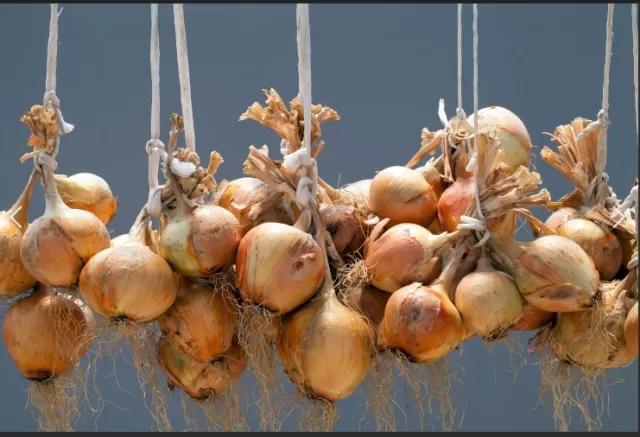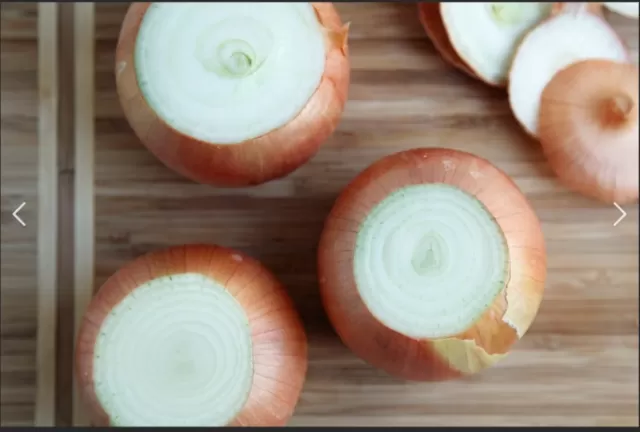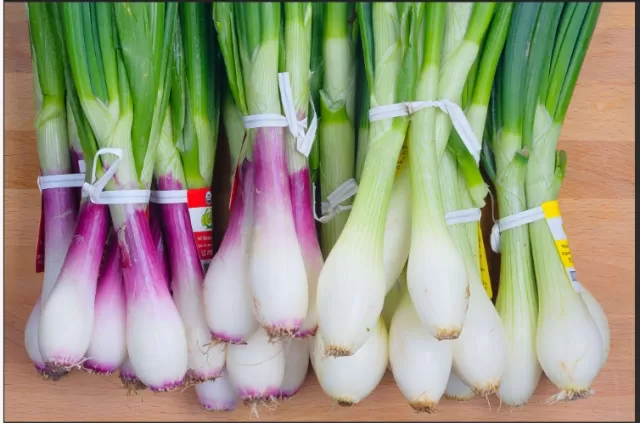Common Onion Varieties. In the vast world of culinary delights, the allium family takes center stage, encompassing a diverse range from onions and shallots to leeks and garlic, among others. Each member of the allium family brings its own unique character to the table, whether cooked or served raw, and holds a special place in the heart of countless recipes. Within this expansive family, yellow onions reign as the all-purpose, ubiquitous staple found in kitchens around the world, while spring onions, with their ephemeral season, can prove elusive in stores.
The charm of alliums lies in their distinct flavors and textures, tailored to various cooking methods and culinary applications. Leeks, for instance, thrive in long cooking processes, imparting a savory depth, while sweet onions offer a crisp sweetness ideal for raw consumption. The versatility within the allium family allows for many types to be used interchangeably, providing a broad spectrum of flavors to cater to diverse palates.
In this culinary guide, we present an exploration of 10 types of onions categorized into three main groups: storage, refrigerated, and specialty. This information serves as a compass for navigating the nuances of onion varieties, empowering you to make informed choices as you shop and create delightful dishes in your kitchen. Let this guide be your companion in the flavorful journey through the allium world, enhancing your culinary repertoire and elevating the art of cooking.
Preserving the Freshness: Proper Storage and Culinary Delights with Storage Onions

To prolong the shelf life of storage onions, it’s imperative to store them in a cool, dry place, such as the back of the pantry.
This simple practice ensures that these culinary essentials remain readily available for an extended period.
Yellow Onions: Versatile and Mellow.
Yellow or brown onions, with their characteristic round shape and papery brown skin, stand out as the quintessential onion variety.
Renowned for their versatility, these onions boast a mild flavor, characterized by a mellow sweetness. Their adaptability makes them a kitchen staple, ideal for caramelizing in dishes like French onion soup, adding depth to creamy dips, or gracing flatbreads with their distinctive taste.
Yellow onions also play a crucial role in mirepoix, forming the flavorful base of numerous soups and stews. For a crispy treat, frying them up to create Martha’s favorite onion rings is an irresistible option.
Red Onions: Bold and Beautiful.
Red onions, distinguished by their ruby red skin and robust pale flesh, bring a sharper flavor to the culinary stage.
While not for those averse to a strong onion taste, red onions showcase resilience in various cooking techniques, including sautéing, grilling, and pickling. Their ability to maintain shape during grilling makes them perfect for kebabs, and their distinct color and spicy flavor make them an excellent choice for pickling.
A tip to temper their sharpness is to soak them in cold water for 10-15 minutes.
White Onions: Mild and Sweet.
White onions, with their Bright White interior and papery white skin, offer a mild alternative to their yellow and red counterparts.
Although lacking the sharpness and crisp texture of other onions, white onions boast an unparalleled sweetness. Thinly sliced, they become a delightful addition to burgers, guacamole, tacos, and soups, contributing a delicious crunch to these culinary creations.
Sweet Onions: Nature’s Dessert.
Varieties such as Vidalia, Maui, and Walla Walla fall under the sweet onion category, featuring a higher sugar content that imparts a sweet and crisp quality.
Larger and more squat in appearance, sweet onions, however, have a softer texture and a shorter shelf life. Best enjoyed within a few days of purchase or stored in the refrigerator to prevent spoilage, sweet onions lend their delectable sweetness to raw salads, baked dishes, and indulgent dips when combined with cream cheese and sour cream.
Whether adding depth to savory dishes or bringing sweetness to indulgent treats, storage onions in their various hues enrich the culinary tapestry, ensuring a burst of flavor in every bite.
Chilling Allium Elegance: The Delicate Dance of Refrigerated Scallions

In the realm of softer and more delicate alliums, the crisper drawer of the refrigerator emerges as a sanctuary for preserving their freshness and enhancing their culinary potential.
Scallions (or Green Onions): A Versatile Allium Marvel.
Known interchangeably as scallions or green onions, these slender alliums frequently grace the canvas of Asian-inspired recipes, ranging from vibrant stir-fries to comforting miso soups.
Their versatility knows no bounds, offering a mild, herby flavor in its raw state and a subtly sweet essence when subjected to the alchemy of heat.
Ways to Use Them: A Symphony of Culinary Possibilities.
Thinly slicing the dark green ends of scallions introduces a refreshing burst of flavor, akin to the impact of other pungent herbs.
Elevating them further, a light coat of olive oil transforms scallions into a delightful grilling sensation when presented whole. Moreover, these green wonders find their place in the creation of a vibrant herb sauce, a versatile accompaniment tailor-made for drizzling over poultry, seafood, or grains.
Proper Storage Rituals: A Damp Cocoon in the Fridge.
To safeguard the delicate nature of scallions and maintain their crisp freshness, employing a storage ritual akin to that of herbs proves paramount.
Encased in a damp paper towel, these slender alliums find refuge within a sealed plastic bag, tucked away in the cool haven of the refrigerator’s crisper drawer. This meticulous approach ensures that scallions remain ready to infuse their distinctive essence into culinary creations, whether raw or gently kissed by the flames of a grill.
So, let the crisper drawer be the keeper of scallion freshness, unlocking a world of culinary possibilities with every tender green shoot.
Unveiling Culinary Jewels: A Glimpse into Specialty Onions

Within the realm of alliums, there exists a distinctive array of flavors and forms, each bringing its own culinary charm to the table.
Shallots: Petite Elegance with a Garlic Twist.
Shallots, presented in clusters that occasionally offer a two-for-one surprise upon peeling, exude a subtle sweetness and mildness that set them apart from their storage onion counterparts.
Notably, these petite beauties carry a hint of garlic-esque flavor, adding a nuanced complexity to dishes.
Ways to Use Them: Culinary Versatility Unleashed.
Shallots prove to be the secret ingredient in elevating vinaigrettes, infusing even the most basic dressing with a mild kick.
Their indispensable role extends to mignonette sauce, drizzled over oysters for a harmonious blend of flavors. Furthermore, shallots emerge as the ideal crunchy topping, providing the perfect finishing touch to the classic green bean casserole.
Cipollini (or Cipolline) Onions: Sweet and Petite Delights.
With a squat shape reminiscent of sweet onions but in a miniature form, Cipollini onions bring forth a flavor profile not far from their larger counterparts.
These tiny Italian onions, with their sweet and concentrated essence, justify the effort of peeling.
Ways to Use Them: A Culinary Adventure in Roasting and More.
Cipollini onions find their culinary spotlight when roasted whole, their natural sweetness enhanced by an acidic glaze or when cooked alongside hearty vegetables like potatoes.
A wonderful addition to condiments accompanying roasts, they lend their distinctive touch to dishes such as ham, enriching the overall flavor profile.
Pearl Onions: Miniature Marvels for Culinary Creativity.
Resembling smaller versions of white onions and sometimes referred to as white cocktail onions, pearl onions earn a place in the world of specialty onions.
Often gracing martini glasses, these tiny bulbs offer a unique touch to various culinary creations.
Ways to Use Them: Roasted, Glazed, or Pickled Perfection.
The versatility of pearl onions mirrors that of cipollini onions—they can be roasted to perfection, glazed for a delightful sweetness, or even pickled for a tangy twist.
Whether adorning roasts, accompanying glazes, or serving as a delightful addition to pickled concoctions, pearl onions contribute a burst of flavor in their petite form.
In the tapestry of culinary delights, these specialty onions emerge as jewels, each with its own distinctive allure, enriching dishes with nuanced flavors and elevating the art of cooking to new heights.
*The information is for reference only.